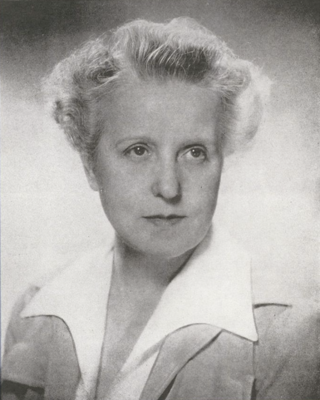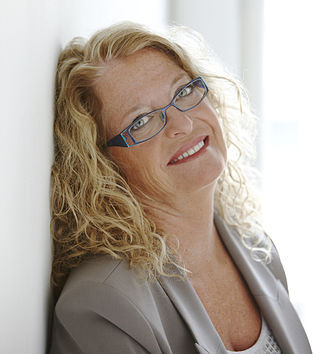Related Research Articles
Maurine Dallas Watkins was an American playwright and screenwriter. Early in her career, she briefly worked as a journalist covering the courthouse beat for the Chicago Tribune. This experience gave her the material for her most famous piece of work, the stage play Chicago (1926), which was eventually adapted into the 1975 Broadway musical of the same name, which was then made into a film in 2002 that won six Academy Awards, including Best Picture.

The University of Wisconsin–Milwaukee is a public urban research university in Milwaukee, Wisconsin, United States. It is the largest university in the Milwaukee metropolitan area and one of the two doctorate-granting research universities of the University of Wisconsin System.

The UW–Milwaukee Panther Arena is an indoor arena located in Milwaukee, Wisconsin. The arena, which seats as many as 12,700 people and offers 41,700 square feet (3,874 m2) of floor space, is part of a larger downtown campus, that includes the Milwaukee Theatre and Wisconsin Center.

Sigrid Schultz was a notable American reporter and war correspondent in an era when women were a rarity in both print and radio journalism. Working for the Chicago Tribune in the 1920s, she was the first female foreign bureau chief of a major U.S. newspaper.
The Green Sheet was a four-page section of the Milwaukee Journal printed on green paper. It was published from the 1910s to 1994, containing comics, the crossword puzzle and other games, celebrity news, local human-interest stories, and bits of ephemera.
Stuart Carlson was an American editorial cartoonist who worked for the Milwaukee Journal Sentinel. His cartoons usually followed the moderate editorial stance of that paper.

Maureen Daly was an Irish-born American writer who wrote the 1942 novel Seventeenth Summer while still in her teens. Originally marketed for adults, it described a contemporary teenage romance and drew a large teenage audience. It is regarded by some as the first young adult novel, and the market niche of young adult literature was not developed until the 1960s, more than 20 years later. At age 16, Daly also wrote the award-winning short story "Sixteen", which appeared in many anthologies.
Robert Dennis McFadden is an American journalist who worked for The New York Times from 1961 to 2024. He won a Pulitzer Prize in 1996.

Gillian Schieber Flynn is an American author, screenwriter, and producer, best known for her thriller and mystery novels Sharp Objects (2006), Dark Places (2009), and Gone Girl (2012), all of which have received critical acclaim. Her works have been translated into 40 languages, and by 2016, Gone Girl had sold over 15 million copies worldwide.

Meg Kissinger is an American investigative journalist and a visiting professor at Columbia University.
The Chicago Evening Post was a daily newspaper published in Chicago, Illinois, from March 1, 1886, until October 29, 1932, when it was absorbed by the Chicago Daily News. The newspaper was founded as a penny paper during the technological paradigm shift created by linotype; it failed when the Great Depression struck.

Eva McDonald Valesh was an American journalist and labor rights activist. Valesh was an activist for, and reported on conditions of laborers in Minnesota's garment factories. She was also a speaker for the Knights of Labor movement and the National Farmer's Alliance.

Kris Radish is an American author, journalist, and nationally syndicated columnist.

Kathleen Gallagher is a Wisconsin-based non-profit executive who was awarded the 2011 Pulitzer Prize for Explanatory Reporting. Gallagher wrote with Mark Johnson, a reporter at the Milwaukee Journal Sentinel, a book based on the Pulitzer Prize-winning series called "One in a Billion: The Story of Nic Volker and the Dawn of Genomic Medicine." Gallagher is now Executive Director of 5 Lakes Institute, a non-profit that promotes technology and innovation. She is also Executive in Residence for Investment Communications at the University of Wisconsin-Milwaukee.
Screen & Radio Weekly was a nationally syndicated Sunday tabloid-newspaper-supplement published by the Detroit Free Press from 1934 to 1940 that covered film, radio, and fashion – and included a short story.
Margo Huston is an American reporter. She won the 1977 Pulitzer Prize for Breaking News Reporting while working at the Milwaukee Journal Sentinel.

Margaret Colby Getchell Parsons (1891–1970) was an American journalist in the 1920s. Although a features writer, rather than an investigative reporter, she matched her investigative peers in originality and, like them, also wrote on under-reported "women's issues." In long-form articles like "What is Least on which a Working Woman Can Live?" she focused on practical issues, such as women's poverty-level wages. But there were also numerous profiles of brave female role models, including Clara Barton, Joan of Arc and Marie, Romania's last queen, who "fled the fairy tale" to minister to wounded soldiers during World War I.
Sob sister was an American term in the early 20th century for reporters who specialized in newspaper articles with emphasis on the human interest angle using language of sentimentality. The derogatory label was coined in 1907 during coverage of a scandalous murder trial that became known at the time as the "Trial of the Century".
Nadya A. Fouad is an American vocational psychologist. She is the Editor-in-Chief of Journal of Vocational Behavior and distinguished professor and chair of the Department of Educational Psychology at the University of Wisconsin-Milwaukee.

Dorothy Roe Lewis was an American newspaper editor and journalist. She was a syndicated columnist and the women's editor for the Associated Press for nineteen years.
References
- ↑ Blakemore, Erin (2020-12-13). "Ione Quinby, Chicago's Underappreciated 'Girl Reporter'". JSTOR Daily. Retrieved 2020-12-18.
- 1 2 3 4 "Ione Quinby Griggs". Encyclopedia of Milwaukee. Retrieved 2020-12-18.
- 1 2 3 4 5 6 7 8 9 10 11 McBride, Genevieve G.; Byers, Stephen R. (2013). "On the Front Page in the "Jazz Age": Journalist Ione Quinby, Chicago's Ageless "Girl Reporter"". Journal of the Illinois State Historical Society. 106 (1): 91–128. doi : 10.5406/jillistathistsoc.106.1.0091. ISSN 1522-1067.
- ↑ "Ione Quinby". www.myheritage.com. Retrieved 2020-12-18.
- 1 2 3 4 5 6 Milwaukee County Historical Society. "Griggs, Ione Quinby Collection." Finding aid. Accessed 10 Dec 2020.
- ↑ Perry, D. (2011). The Girls of Murder City: Fame, Lust, and the Beautiful Killers Who Inspired Chicago. United Kingdom: Penguin Publishing Group. p.150
- ↑ CHAN, CHRIS (2011). "MILWAUKEE'S LOCAL COLOR: The Journal, the Green Sheet, and its Readers". The Wisconsin Magazine of History. 94 (4): 14–27. ISSN 0043-6534.
- ↑ "Western Springs' "Girl Reporter"". Western Springs, IL Patch. 2013-10-08. Retrieved 2020-12-18.
- ↑ Green, Betsy J. (2002). Western Springs, Illinois. Arcadia Publishing. ISBN 978-0-7385-1951-7.
- ↑ Fahs, Alice (2011). Out on Assignment: Newspaper Women and the Making of Modern Public Space. Chapel Hill: University of North Carolina Press.
- ↑ Griggs, Ione Quinby (1931). Murder for Love. New York: Covici, Friede.
- 1 2 "Chicago Newspapers". chicagology.com. Retrieved 2020-12-18.
- 1 2 3 4 Stingl, Jim (31 May 2014). "Advice columnist Mrs. Griggs subject of new biography". www.jsonline.com. Retrieved 2020-12-18.
- 1 2 Foran, Chris (3 June 2015). "Ione Quinby Griggs: Green Sheet's answer lady". www.jsonline.com. Retrieved 2020-12-18.
- ↑ "Hall of Fame - Milwaukee Press Club". milwaukeepressclub.org. 2014-07-16. Retrieved 2020-12-18.
- ↑ "Archival Resources in Wisconsin: Descriptive Finding Aids". digicoll.library.wisc.edu. Retrieved 2020-12-18.
- ↑ Milwaukee Press Club (2018). Once a Year . Claire Hanan (ed). Milwaukee, WI. p. 23
- ↑ Greater Milwaukee Foundation Journal Foundation/Ione Quinby Griggs Journalism Scholarship - UWM Panther Scholarship Portal". uwm.academicworks.com. Retrieved 2020-12-18.